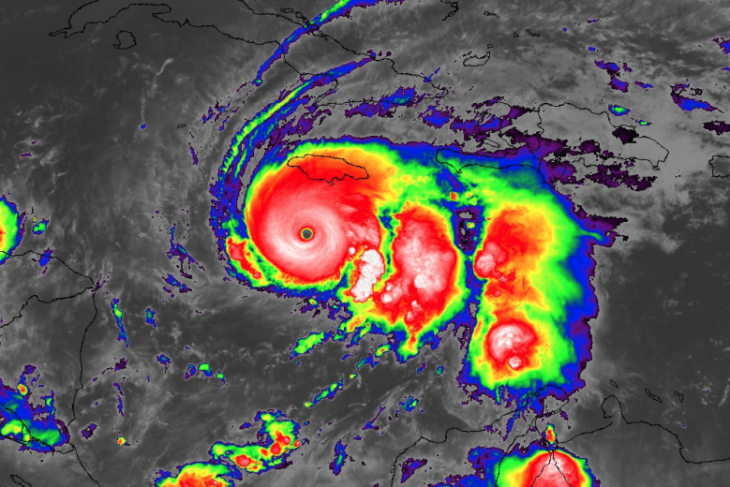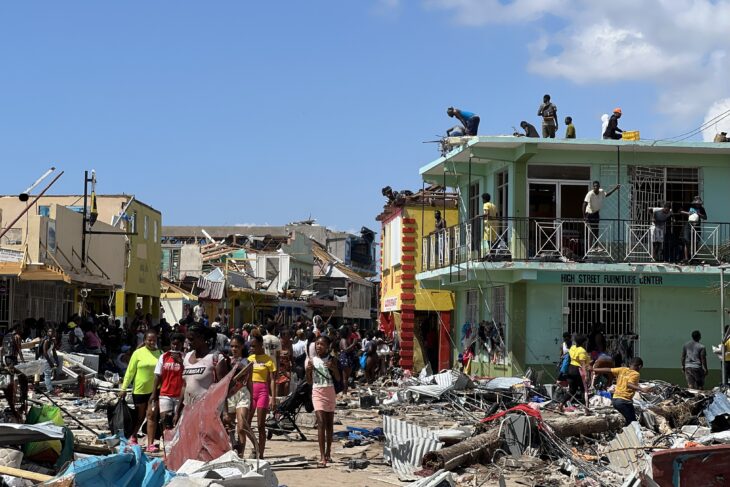
 One might say that nowadays most Jamaicans take the following propositions as axiomatic truths:
One might say that nowadays most Jamaicans take the following propositions as axiomatic truths:
- Not all motorists are “people of quality” (you know that oft-quoted line from the late Rex Nettleford about a buttu in a Benz is still a buttu).
- Notwithstanding this first proposition: All people of quality travel by automobile.
- Those who don’t are, by definition, not people of quality.
For public officials, law enforcement officers, the media, and most motorists it seems, walk-foot people simply don’t matter. To them, the only grown-up, fully worthwhile citizen is one who is motorized. At least so one must conclude from the ways pedestrian citizens are treated.
These remarks are based on ethnographic observations gleaned over the past few years doing research toward a series of essays about contemporary Kingston. Moving about the city and other areas of Jamaica via public transportation and on foot has afforded me a pedestrian-eye view of things that most middle and upper class Jamaicans these days rarely experience. My observations directly implicate both government policy and the routine but disabling indifference of the media and of ordinary citizens. In Part 1 of Walk-foot people matter, I call attention to the negligence of the State and its personnel; next, in Part 2, I will focus more on the cavalier disregard and systematic discrimination we as fellow citizens mete out to each other. I argue that these actions by the State and by our fellow citizens constitute forms of structural violence that need to be recognized and addressed.
Sidewalks and Crossings
Pedestrians face constant indignities and are routinely put at risk by actions of the State and by their fellow citizens. Most sidewalks, where they do exist, are hazardous. Surfaces are eroded, uneven, and discontinuous. Twisted, sawed-off steel rods, scarcely visible even in daylight, occasionally protrude just above ground level; cavernous holes remain uncovered where manhole covers have been removed; utility poles, cables and construction debris frequently impede safe passage.
Many of Kingston’s busiest arteries have been expanded from two to four or five lanes and sidewalks have correspondingly been shrunken so that it is often difficult for pedestrians to walk two-abreast or to pass each other in opposite directions without one having to step into the street. These cramped conditions are made worse by utility poles, support cables, hydrants and other obstructions.
Motorists park their vehicles on sidewalks with impunity. Recently, I saw a line of a dozen parked cars fully blocking the sidewalk on Old Hope Road outside Sts Peter & Paul church, directly across from the Matilda’s Corner Police Station.
Most sidewalks in Jamaica deteriorate rapidly because they are not constructed to meet proper engineering standards. If sidewalks are built with three to four inches of concrete that is properly vibrated and cured, at a strength of 25 MPa, and cast in six-foot lengths with joints to accommodate shrinkage and expansion, they will last practically forever, insists John Allgrove, a civil engineer of over 50 years’ experience working in the public and private sectors. Sidewalks in some of the older housing developments like Mona Heights and Hope Pastures, those in sections of downtown near the waterfront, and many in New Kingston meet these specifications and have lasted for 50 years.
By contrast, many sidewalks built by the KSAC, local authorities and private contractors use crushed stone covered by a thin, half-inch layer of sand and cement mortar. This slender layer of sand and cement is like putting a coating of butter on bread, Allgrove notes.
Street crossing accommodations for pedestrians — zebra crossings, phased traffic lights and walk signals — are woefully inadequate. Marked pedestrian crossings are most consistently found near schools, and crossing guards are sometimes employed to assist children to cross safely at the start and end of the school day. The irony, however, is that having taken care to protect and train children in the proper use of cross walks near their schools, we then leave them to the slaughter elsewhere as well as in their adult lives.
The widespread absence of pedestrian-friendly facilities, then, undermines the road safety training children receive in school. The expanded roadways we have been building in Kingston and across the island in recent years move vehicular traffic at faster and faster speeds, but have not been designed to accommodate the needs of pedestrians to walk and to cross these streets in safety. Pedestrian deaths account, on average, for almost 30% of all road traffic fatalities. Based on statistics supplied by the Police Traffic and Highway Division, of the 260 people who died in traffic accidents in 2012, a total of 85 were pedestrians; and in 2015, 91 of 382 traffic fatalities were pedestrians.
We have daily traffic reports on radio, regular auto sections in the newspapers, irate letters to the editor about potholes, but seldom do we have sidewalk reports. While the media habitually pay attention to motor vehicle traffic, roads in need of repair, and malfunctioning signals, they pay little or no attention to the hazards pedestrians routinely encounter. We pander to those citizens whose practices are most environmentally destructive and ignore or actively discourage those whose carbon footprint is smallest.
Having narrowed sidewalks in many parts of Kingston and other urban centres to create additional lanes for motorists, the authorities have lavishly installed metal barriers in certain areas of high-density traffic such as Half Way Tree, Three Miles, and sections of Spanish Town, presumably to prevent pedestrians from straying into the pathway of moving vehicles.
These barriers add to the indignities pedestrians are plagued with. They send a clear signal that the State regards walk-foot citizens as no more than animals or imbeciles: corralling pedestrians like cows. Although the number of pedestrians has increased with population growth, governments have cut back on the provision and maintenance of basic facilities to accommodate them.
The State now attempts to deflect recognition of its own neglect by signaling that it is the inattentive pedestrians who are at fault, incapable of looking out for their own self-preservation.
In some glaring instances, access to sidewalks allowing safe passage for pedestrians has been entirely taken away. Such is the case in downtown Kingston where sidewalks adjacent to several public buildings on Barry and Tower streets, for example, have been blocked off.
Ironically, these buildings house the Supreme Court and the office of the Director of Public Prosecutions, institutions whose job it is to preserve the rights of citizens. In taking steps, apparently to ensure the safety of their own staff, they turn a blind eye to the safety of their fellow citizens.
Surely, it is worth asking whether some of these discriminatory practices — the hazardous condition of sidewalks, the absence of marked crossings and signals, the permanent blocking off of sidewalks that force pedestrians to be exposed to oncoming traffic, the failure to enforce violations against their rights, and more — whether such conditions may be actionable under certain provisions of the Charter of Fundamental Rights and Freedoms.
Central and local governments, along with their planning and building authorities, should be made to consider and cater for pedestrians and pedestrian traffic as they do auto traffic. Pedestrian citizens should be treated not as an afterthought, but as fully worthwhile. Regrettably, however, through systematic neglect by the State and the indifference of fellow citizens, pedestrians and cyclists are being made into endangered species just as dray cart drivers and their working mules and donkeys became in the 1950s and ’60s, many of them killed off by lethal, fast-moving automobiles.
[2] 1. “Walk-Foot People Matter” was first published in Social and Economic Studies
65[4]:123-129 (2016) Tyler Johnson Womens Jersey




Very important topic. The disregard for some groups and demographics has been a feature of our society for a long time. With social media, it is now easier for even quiet voices to be heard. This matter should be discussed openly and action taken to correct. Why don’t we have ‘Town Hall’ meetings to discuss these topics and plan for the future? Needs a leader with a vision, something we are lacking badly.
Excellent article. I think of the dilemma of ‘walk-foot’ citizens every time I drive through the new and ‘improved’ Barbican Square.
But is anybody listening?